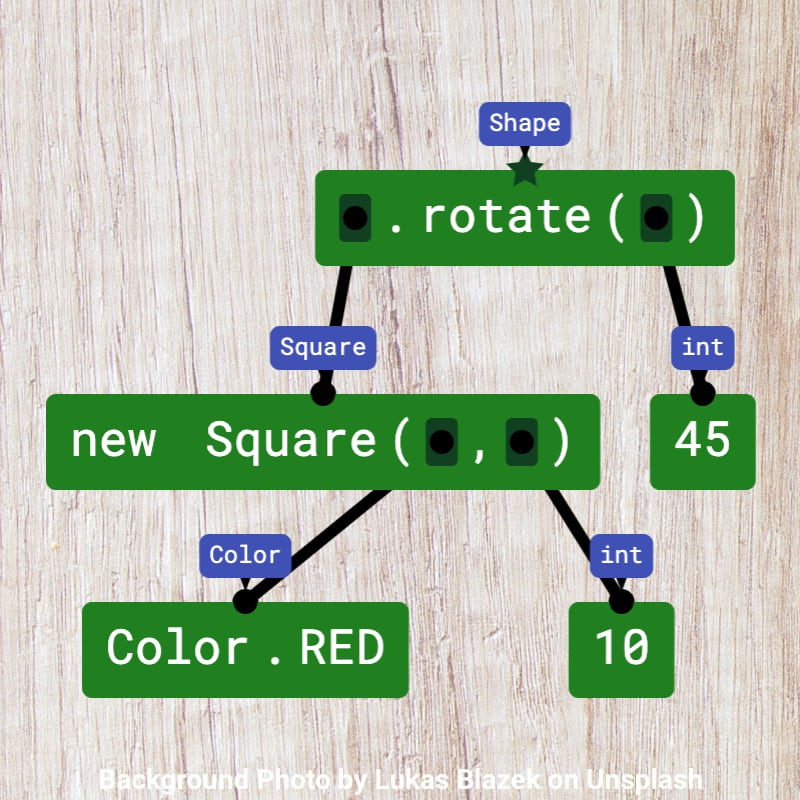
imperative, OO / Java
Representation
Collected by Matthias Hauswirth — Own practice
Makes explicit the fact that object allocation, method invocation, and field access are just expressions and can be composed like any other expression.
| PL | NM |
|---|---|
| ... | (all aspects from 2-Logic) |
| null | tree node containing 'null' |
| this | tree node containing 'this' |
| instantiation | tree node with 'new', class name, and a parentheses containing comma-separated holes for constructor parameters |
| variable | tree node containing name of variable of an Object type |
| instance field access | tree node containing a hole, a dot, and a field name |
| instance method invocation | tree node with a hole, a dot, and parentheses containing comma-separated holes for method parameters |
| class field access | tree node containing class name, a dot, and a field name |
| class method invocation | tree node with class name, a dot, and parentheses containing comma-separated holes for method parameters |
The structure, typing, and evaluation of expressions involving instances and classes.
When explaining nesting and chaining of method calls and constructor calls, class vs. instance method and field accesses, null, and this.
Small, can be done on paper or with a tool like Expression Tutor.
The following videos and activities come from ExpressionTutor.org, where you can find a much more comprehensive set of resources and tools. Expression Tutor supports many different programming languages, but the material discussed here is specific to Java.
The Crash Course: Expressions in Java provides a learning experience that corresponds to this notional machine sequence.
The following video comes from section Objects of the Crash Course.
Here is an example “Expression Tutor” activity. Can you solve it?
Do you have feedback on this notional machine? Did you find a mistake, or do you have a request for improvement? You can create an Issue on GitHub, where the description is hosted. This way we can see your feedback and address it.
For this, you need a GitHub account. Then follow this link to see the source file of this page. In there, click the ... left of the highlighted line, then pick "Reference in a new issue".